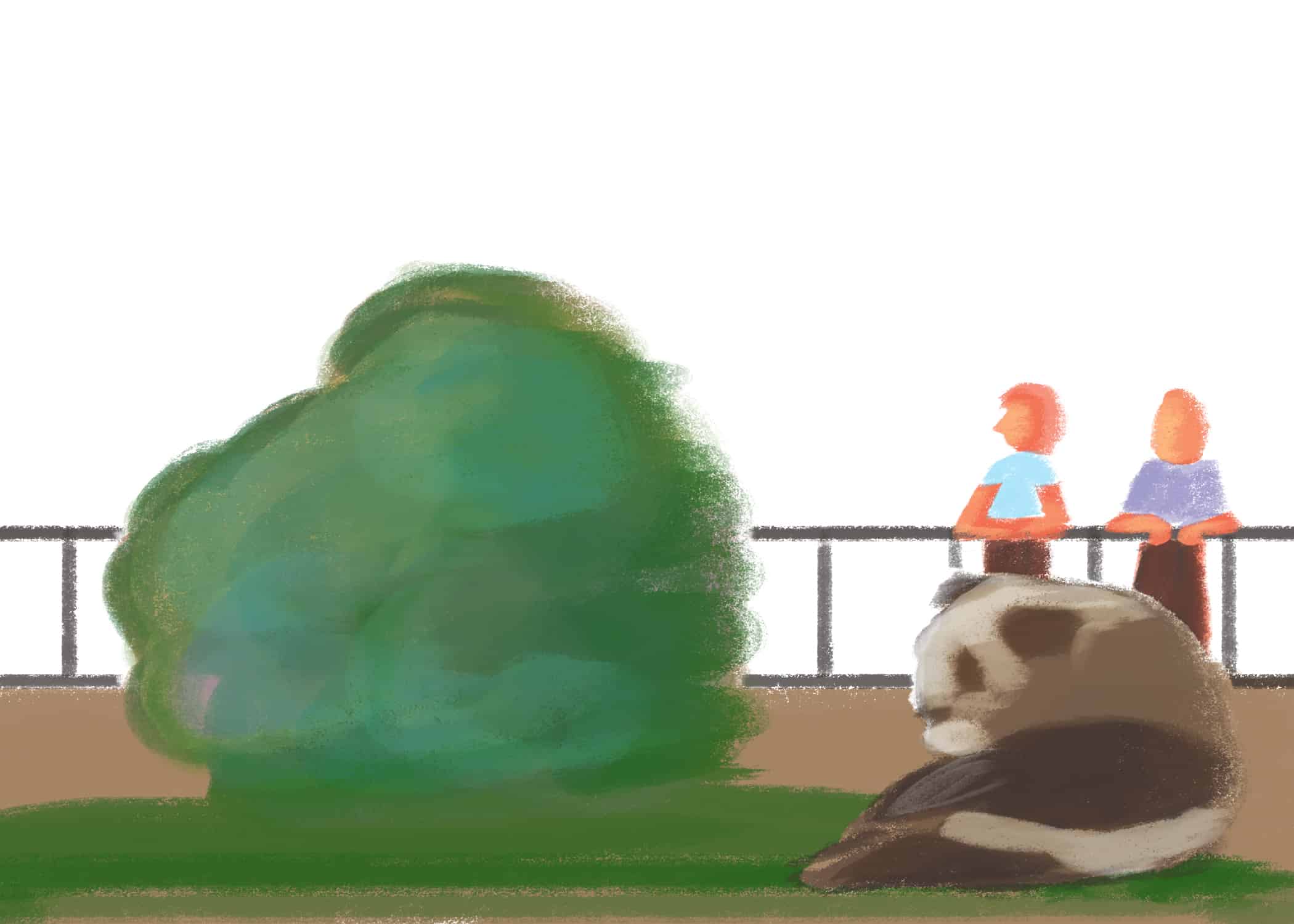[dropcap]L[/dropcap]ike many kids growing up, my childhood summers consisted of annual trips to the Toronto Zoo, Marineland, and other animal parks. After being handed ice cream cones brimming with piles of animal feed, we would race out into the deer enclosure and be engulfed by a ravenous herd of does and bucks eagerly nibbling at our fingers. Once the food had gone, they would turn to our clothes, forcing us to race back to our parents with our shirts spotted with crumbs and deer saliva. Recent stories emerging from behind the iron gates, however, have caused my outlook on zoos to take a different, much darker turn.
Uproar broke out when Harambe, a 17-year-old endangered silverback gorilla living at the Cincinnati zoo, had to be shot in order to rescue a child who had fallen into the enclosure. The stories continue with the death of two lions in a Chilean zoo, who were both killed to save a man in late May of this year.
The controversy over captivity is nothing new: the concept was thrust into the public eye with films like Blackfish, a documentary on the deaths of three Seaworld trainers caused by Tilikum, a killer whale.
Events like these reveal the kinds of problems that can arise when animals are kept in captivity. Although these events are rare, animal welfare within captivity is still relevant, especially when dealing with endangered species — every animal is extremely important to species preservation.
The Association of Zoos and Aquariums, along with other non-profit organizations outline the standards for captive animal enclosures, but their minimum requirements are not always followed.
In one instance, 40 per cent of bear enclosures in European zoos did not meet the required size and were lacking in components such as appropriate enclosure surface, stimulation, and professional care. Zoos that are unable to adhere to the required guidelines can cause changes in hormones, disruptions to sleep patterns, boredom, and increased stress for the animals. For animals not born in captivity, a sudden downsizing in habitat space can cause enough stress to result in the development of chronic diseases.
The concept of animal housing is not always simple and the reaction of the animals to new surroundings can vary. Primates, such as chimps and gorillas, tend to avoid larger groups of human visitors, whereas large cats are less stressed around visitors and the presence of humans could even be described as ‘enriching.’
Individual inhabitants of the enclosures respond to stress differently, making it difficult to come to a solid conclusion on what would be considered harmful for the entire group. The smallest details, such as high noise levels or the absence of natural lighting, can result in a jump in stress levels for some animals.
Captive breeding in zoos makes sense for the purpose of species conservation. Many studies, however, stress the need to move away from the ‘ark’ mentality, where species are raised in isolation from the threats which caused their decline in the first place.
As of 1995, only about 11 per cent of all reintroduced species in North America have been able to successfully re-establish self-sustaining populations. Threats, such as disease and habitat loss, are often more complex than they appear and the ability of the populations to live alongside the threats they face are essential to their survival.
Zoos serve as a reservoir to recharge the population numbers within a species, but that is only one part of the strategy. In addition to captive breeding, it is essential to understand and aid in their ability to handle emerging threats, especially against a shifting climate and a changing landscape.
A variety of studies found that zoos create positive feelings towards nature and a willingness to protect it, even going so far as to promote biological literacy and learning. When visitors at the Bronx Zoo experienced diverse animal behaviours and interactions with the animals like eye contact, they perceived animals as interactive and emotionally engaging, regardless of previous attitudes towards nature conservation. However, it is important that programs follow through and draw the connection between the knowledge delivered and how it can be applied.
“Getting the public actively involved through citizen science is important,” says Becky Raboy, an assistant professor of Ecology and Evolutionary Biology at the University of Toronto. Referring to public programs, such as Toronto’s annual Bioblitz, she continues: “People are able to roll up their sleeves and become part of understanding the state of our current environment. It puts them in the right mind to understand how fragile our biodiversity is, and our responsibility as humans to act as better stewards of the environment, and those impacts are far reaching.”
When considering zoos, there is no clear consensus regarding the ability of an animal to adjust; it is plain there could be room for rigorous improvement to uphold the quality of life standards which have been set to benefit the animal. Moving forward, all human participants must revamp their strategy in the face of a rapidly changing climate and focus on how they can create sustainable animal populations, which can eventually reinhabit their range.


